Winter is such a beautiful time of year in Canada. When I think of winter in Canada, I picture the sun streaming on a frozen lake and curls of chimney smoke floating into the sky. Winter reminds me of the excitement of walking through a silent, snow-covered canyon where the only sound is the rhythm of my bulky clothes swishing to the crunching sound of my boots on fresh snow. Winter in Canada is feeling the magic in the air while walking through a forest of conifer trees heavily laden with snow, while snowflakes fall around me in a swirling pattern that abides by rules only known to nature itself.
I live in a warm climate far from Canada, where one season blends into another, so for me, Canadian winters are filled with unfamiliar sensations that promise exciting adventures. What I look forward to most of all is the fluttery feeling as I shuffle on skis towards a chairlift, the excitement of gliding down my first green run of the season without falling and the anticipation of finding the confidence to ski a blue run without an instructor.
But Canada in winter is not just about skiing or snowboarding, there are plenty of other reasons this is a beautiful season to go. The scents of a Canadian winter are so comforting that it makes even the most mundane tasks like walking in the forest or riding a bike, or reading a book seem special. Winter in Canada is a top note of hot chocolate rising above the bouquet of melted snow wafting through a ski lodge. Somehow, soup, sandwiches and hot chocolate tastes better in winter than any other time of the year. Winter is the time to eat pancakes slathered in maple syrup and to roast smores over a fire on a frozen lake. In winter, the air smells crisp and fresh, no matter where you are in Canada.
There’s something about the way the light changes at this time of year. Whenever I visit Canada in winter, I feel like I’ve fallen down a rabbit hole and emerged in an enchanted white wonderland. It’s even more magical when Christmas lights change colour every night from red to green to blue and yellow, reflecting the transition between seasons.
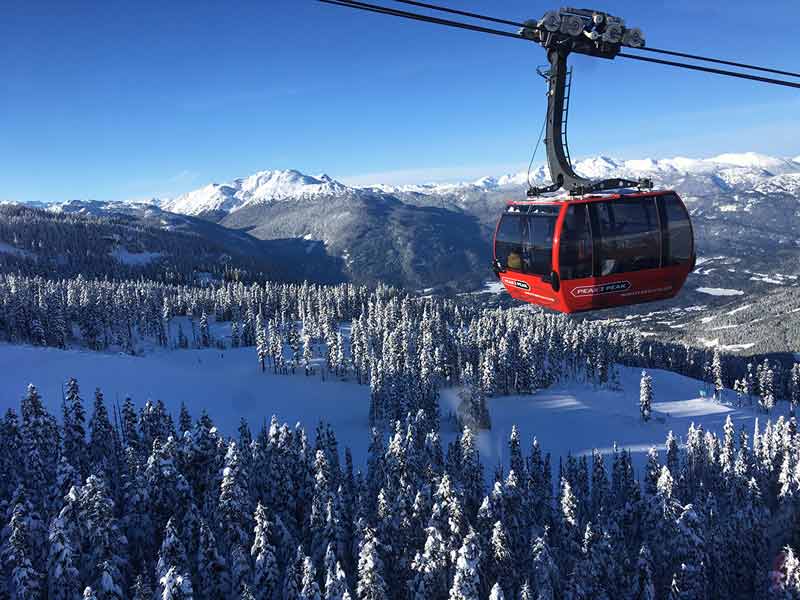
The beauty of the Canadian winter landscape takes my breath away, and its spell bewitches me. There are many places in Canada to choose from in winter, and there’s always something new to discover, whether it’s seeing the Northern Lights dancing above the horizon or admiring ice sculptures or frozen waterfalls. After all, the country is home to some of the best ski fields, deepest lakes, longest hiking trails, highest peaks and most beautiful falls.
There are activities in winter to suit everyone. Whether you’re skating the Rideau Canal or learning at a local skating rink, taking a beginner’s lesson or going backcountry snowboarding, drinking hot chocolate at a winter festival or ice fishing on a lake, winter offers lots of fun attractions for everyone. Here are some reasons to visit Canada during this magical time.
Contents
- Winter in Canada
- 15 Reasons To Visit Canada In Winter
- 1- Skiing and Snowboarding
- 2- Stunning Winter Scenery
- 3- Experiencing A White Christmas
- 4- The Northern Lights
- 5- Food Is Tastier In Winter
- 6- Ice wine
- 7- Family Fun
- 8- Challenging Winter Adventures
- 9- Winter is Romantic
- 10- Savings
- 11- Culture Vultures
- 12- Explore Charming Old Towns
- 13- The Wildlife Is Amazing
- 14- Winter Festivals
- 15- Craft Breweries
- Winter FAQs
- 15 Reasons To Visit Canada In Winter
Winter in Canada
15 Reasons To Visit Canada In Winter
1- Skiing and Snowboarding
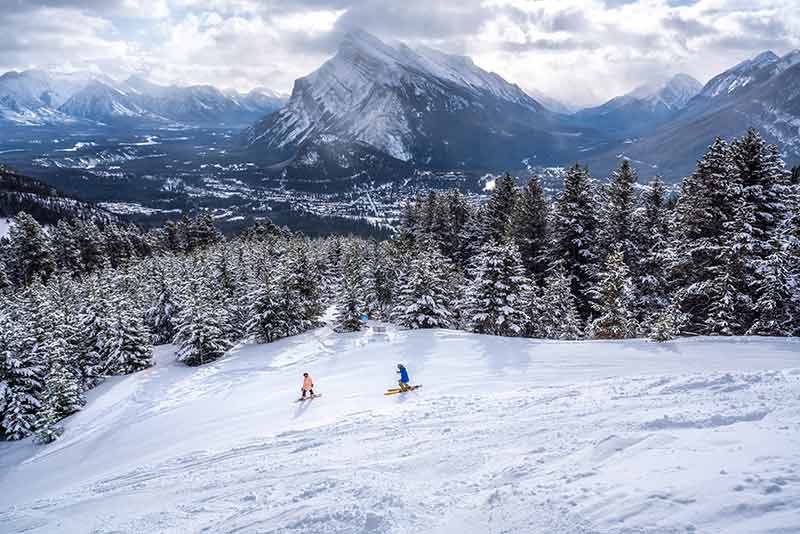
Canada has a well-deserved reputation as one of the best places in the world to go skiing or snowboarding because it has reliable snow and lots of ski fields with plenty of powder.
Most resorts frequented by Australians are in the west, in British Columbia and Alberta, but there are also excellent ski resorts in Quebec.
Whether you hit the slopes of Whistler Blackcomb, Big White, Sun Peaks, or Silverstar or experience winter in the national park resorts of Lake Louise-Sunshine, Mount Norquay or Marmot Basin, a winter holiday in Canada is a bucket list experience.
From ice fishing and ice climbing to skating and cross-country, Canada’s ski resorts offer a range of winter attractions.
Whistler Blackcomb has fantastic terrain parks, vibrant nightlife, lots of restaurants and plenty of entertainment.
Skiing in Banff National Park is an iconic experience and even though Banff is a year-round destination and a popular place in summer, there’s no better time to visit this part of the Canadian Rockies for outdoor attractions than in winter.
Banff National Park’s majestic scenery takes my breath away. The park has three ski resorts (Lake Louise, Sunshine Village and Norquay) called the ‘Big 3’, and the town of Banff is a lovely place to shop and eat if you want to be a tourist.
The snow season in Canada is generally quite long, running from late November until April, and some resorts will extend into May if conditions are favourable. The coldest months are January and February when you’ll find the best powder.
Also read:
- A Guide To Skiing In Canada
- 20 Things To Do In Whistler In Winter
- 50 Things To Do In Canada For All Seasons
2- Stunning Winter Scenery
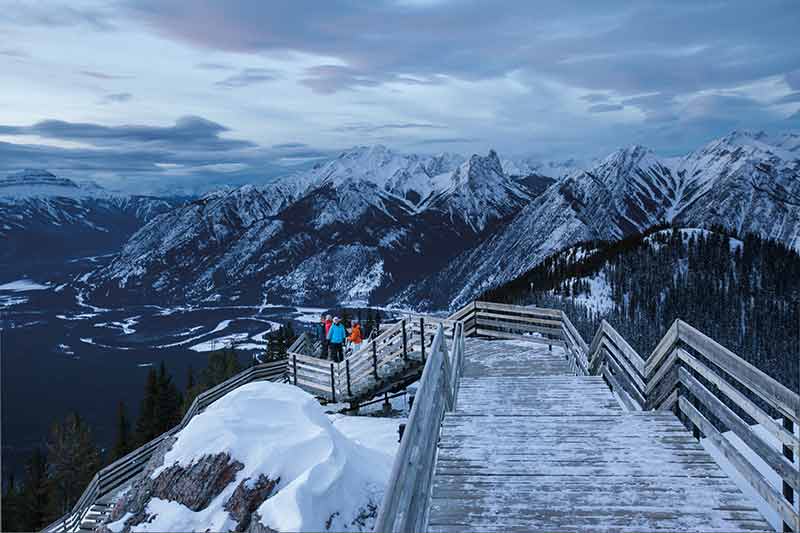
Canada’s winter season brings with it a natural beauty that is so alluring to explore.
From the snowy peaks of Banff National Park to the lush forests of British Columbia and the frozen beauty of Niagara Falls, the views are breathtaking.
With so many places to visit across the country, visitors have plenty of options when planning a Canada winter vacation.
Choices range from exploring the stunning scenery of the Rocky Mountains to enjoying beautiful lakeside settings near Toronto or flying over the ethereal landscape of the Yukon or spotting polar bears on the frozen waters of Hudson Bay.
Banff National Park and Jasper National Park are two of the most popular national parks for visitors. Although they are both year-round destinations, they have some of the best places for winter photography.
Also read:
3- Experiencing A White Christmas
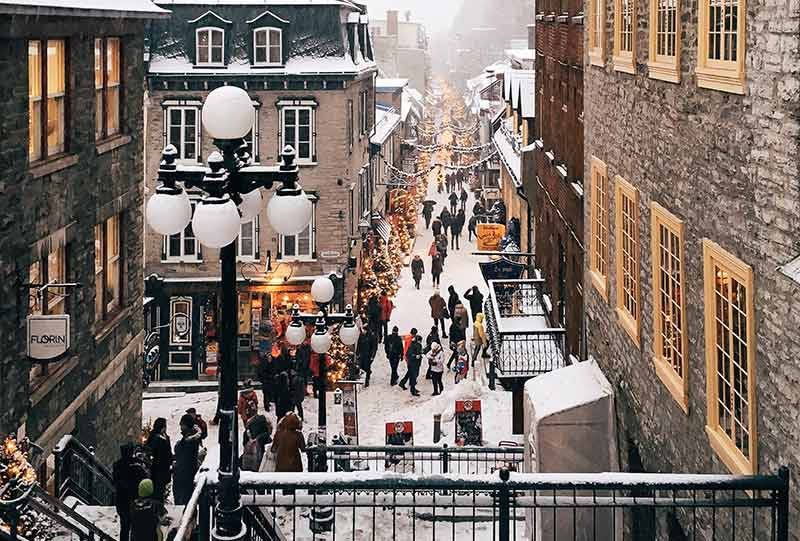
Strolling past snow-dusted street stalls decked out with twinkle lights is a delightful way to experience the holiday season.
Shop for Christmas ornaments, artisan chocolate and handcrafted wooden toys while enjoying the aroma of roasted nuts and mulled wine.
Drinking hot chocolate by a warm fire beside an ice skating rink is another of the joys of a white winter.
The ski fields in British Columbia, Alberta or Quebec all have festive village atmospheres where you are guaranteed a White Christmas.
For a city experience in winter, Quebec City tops the list for old-world charm but also visit Winnipeg, Whitehorse, Toronto, Ottawa and Niagara Falls.
Also read:
4- The Northern Lights
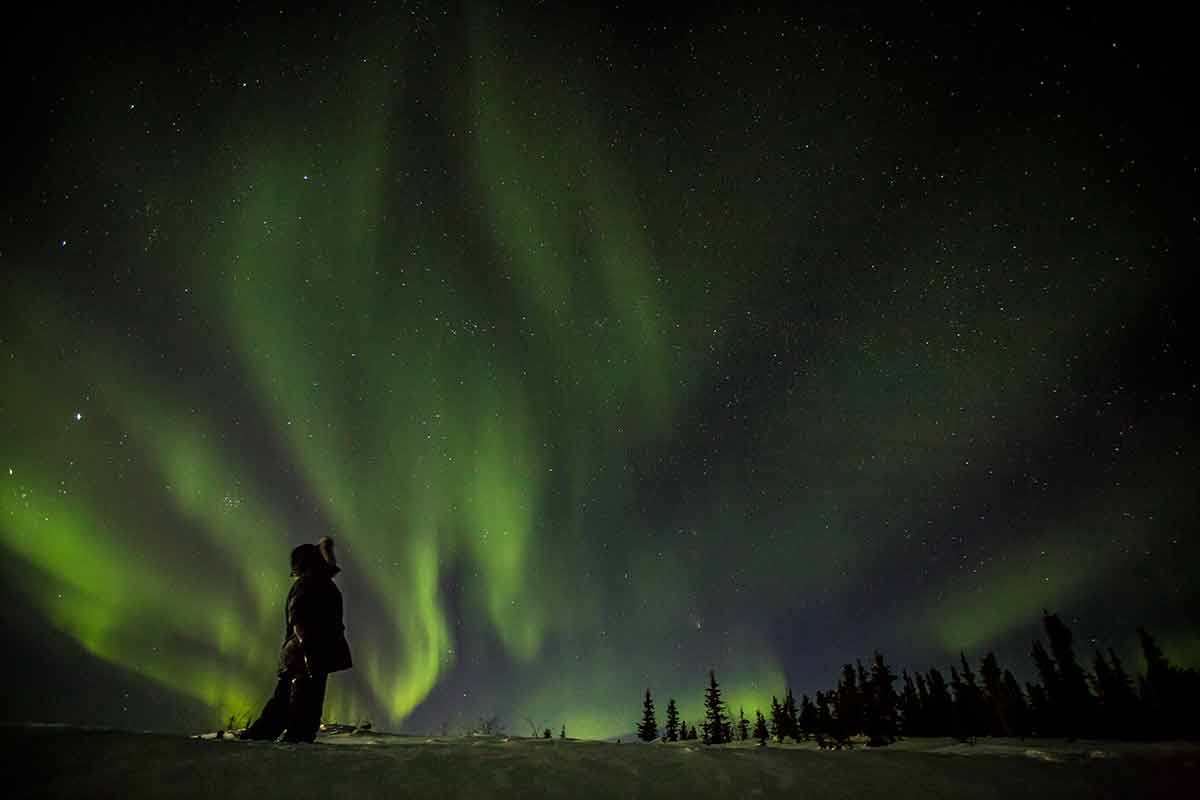
The Aurora Borealis or Northern Lights dazzles in the night sky during the winter months.
Nature puts on this impressive but often unpredictable light show across the country but especially in the Northwest Territories, Nunavut and Yukon.
Yukon is the most accessible place to see the Aurora Borealis and has other unique attractions including the Yukon Quest, a 1600km dog sled race between Whitehorse and Fairbanks in Alaska.
The Northern Lights occurs when the sun’s electrically charged particles enter the Earth’s atmosphere and the best time to visit to see them is between November and March.
It’s worth braving a cold night to see bands of purple and green streak across the sky or a shimmering green curtain dropping above your head.
Also read:
5- Food Is Tastier In Winter
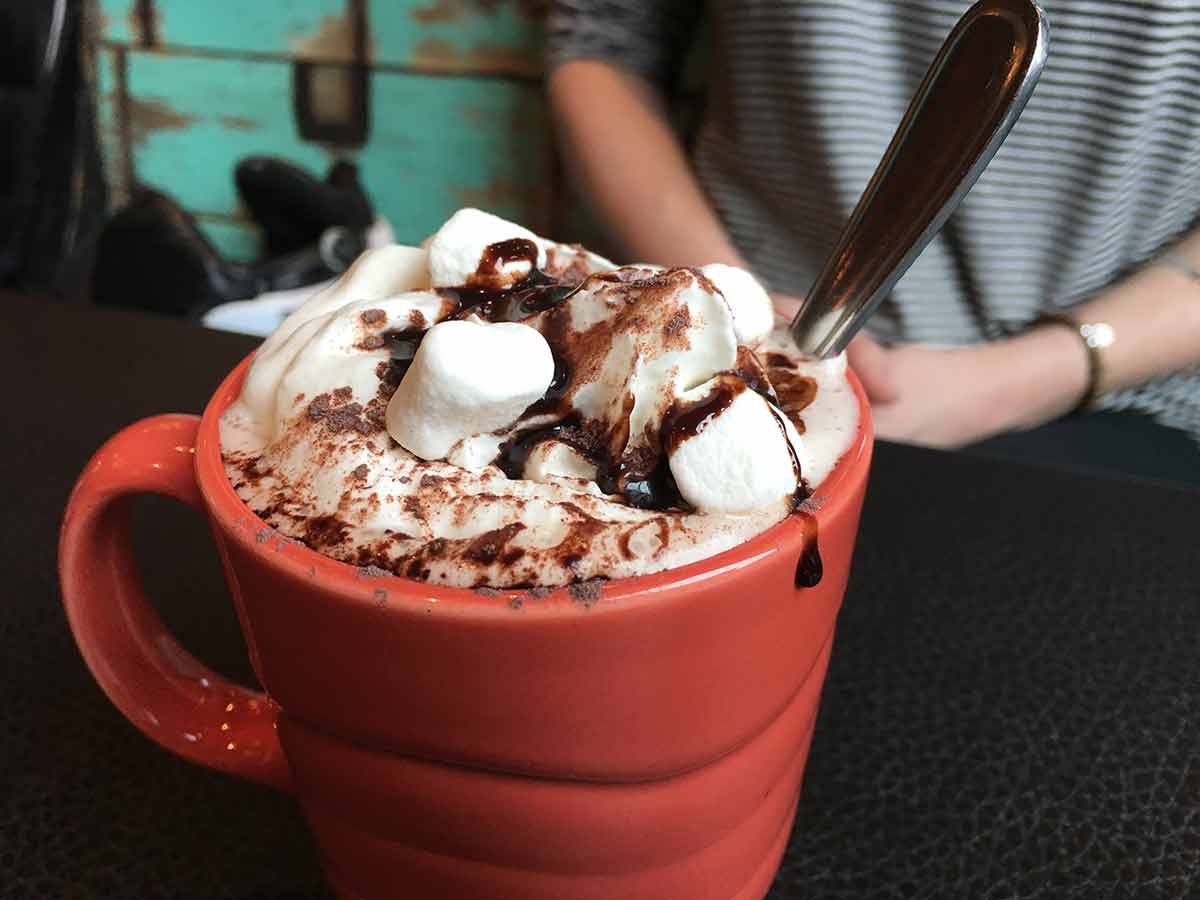
In winter, you can indulge without guilt in Canadian comfort food like poutine (French fries and topped with cheese curds and gravy), Beavertails, butter tarts and Nanaimo bars.
The traditional food and treats of Quebec, Nova Scotia and Newfoundland and Labrador are particularly suited to colder weather. And there’s a cool culinary scene in Vancouver.
With ingredients changing depending on the region, foodies will find themselves sampling new flavours every day, whether you’re visiting a trendy city or a popular tourist attraction.
Restaurants serve hearty meals that will keep your belly full after a long day outside, from fresh seafood, steaks and comfort food favourites to traditional treats.
Also read:
6- Ice wine
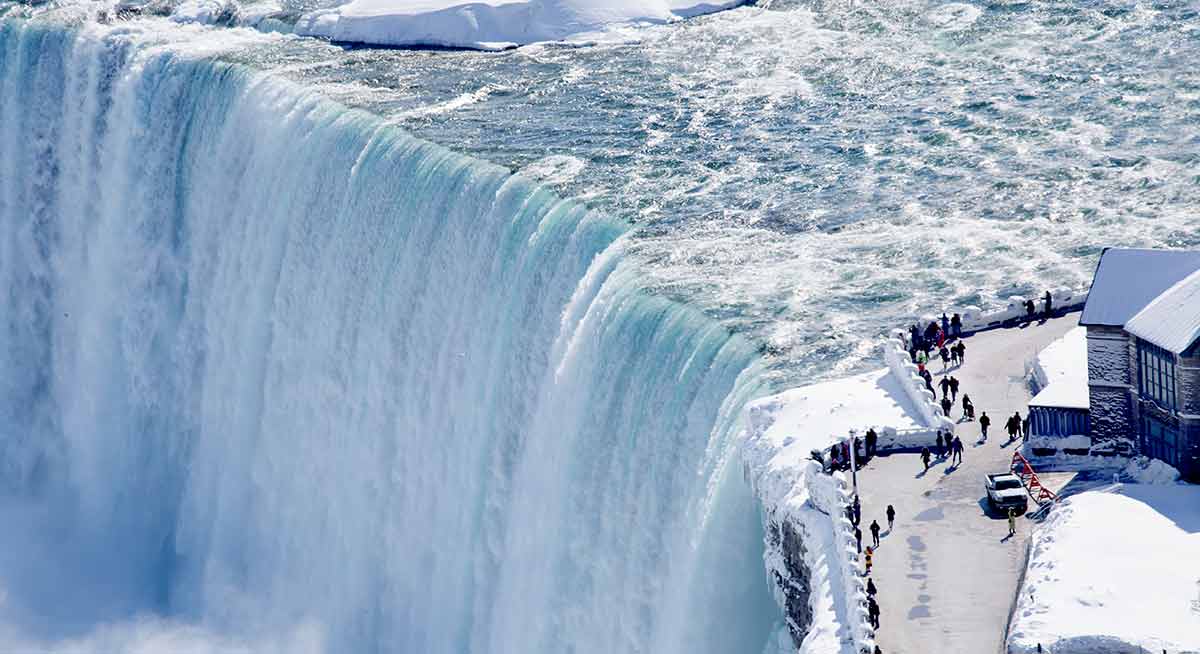
Ice wine is a dessert wine that can only be produced in cold climates and tastes nothing like regular wine but delights tasters all the same.
Ice wine is made with grapes frozen while they’re still on the vine and tastes so good because the sugars in the fruit do not freeze, so the flavours are full and concentrated at harvest time.
Canada is famous for its ice wine, with around 75% produced in Ontario.
One of the best places in Canada to try ice wine is in the Niagara on the Lake wine region in Ontario, near Niagara Falls.
Also read:
7- Family Fun
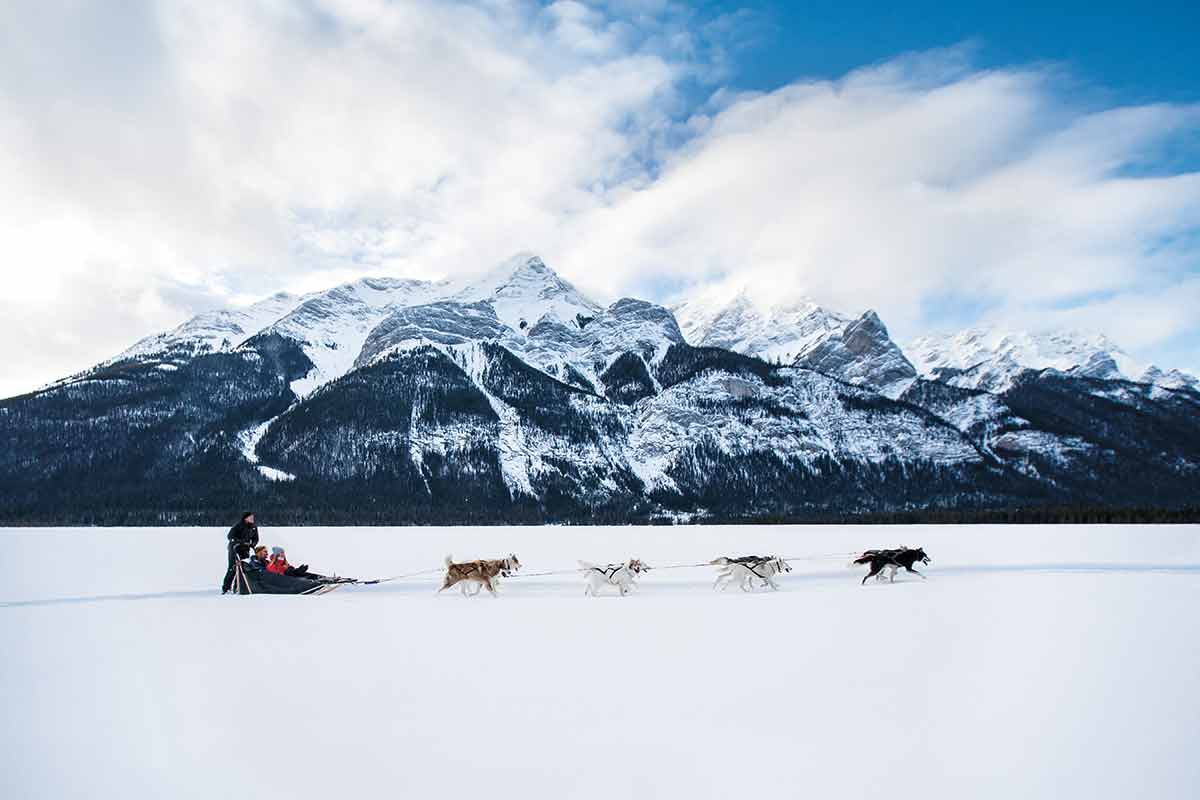
Most winter resorts in Canada have a slew of winter activities for families include skiing, snowboarding, ice skating, sledding, ice hockey, tubing, ice sculptures and sleigh rides.
Canada has a long history as an ice hockey-playing nation. The Mi’kmaq First Nations people of Nova Scotia played ice hockey in the early 1800s.
The first formal indoor ice hockey game in the world was played in Montreal in 1875.
Whether it’s a canyon hike in Alberta, a snowshoe tour in British Columbia or dog mushing in the Yukon, Canada delivers loads of winter fun for all ages.
8- Challenging Winter Adventures
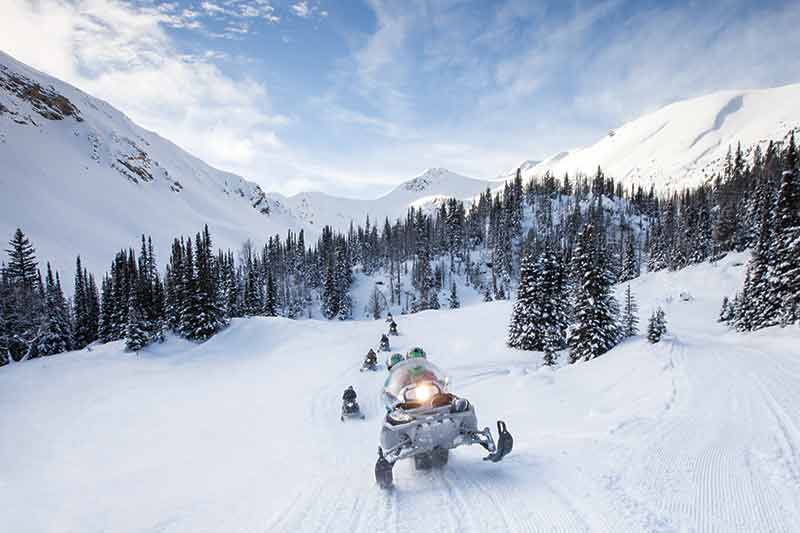
Aside from skiing and snowboarding and fun family activities that anyone can participate in, the winter months also bring opportunities for winter sports and challenging winter activities.
Strong intermediate and advanced skiers and boarders can test their endurance on a multiday heli-skiing trip in the backcountry areas of British Columbia, Alberta or Yukon.
Ice climbing, ice fishing, fat biking, snowshoeing, Skidoo-ing, dog sledding and skijoring (dog sledding on cross-country skis) and cross-country skiing are other outdoorsy activities that travellers can challenge themselves to.
Lace up those skates and go ice skating along 7.7 km of the frozen urban river on the Rideau Canal in Ottawa, which is a UNESCO World Heritage Site.
In winter, it turns into the Rideau Canal Skateway and is free to go skating all day long.
9- Winter is Romantic
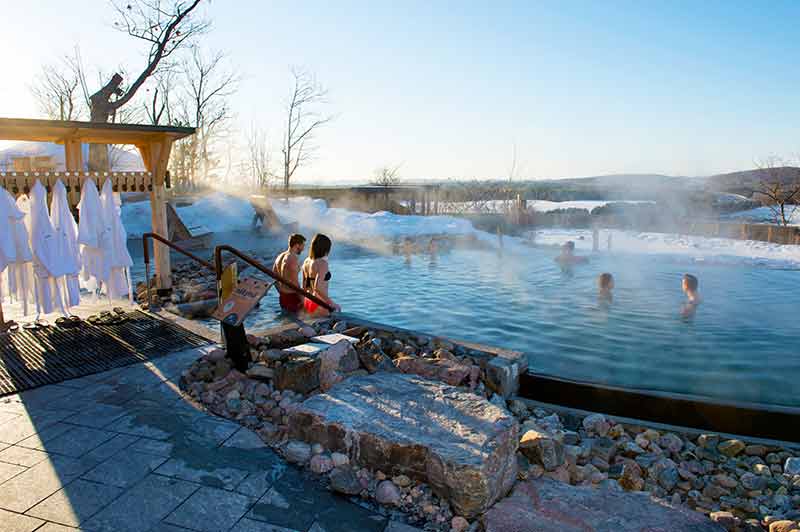
Who doesn’t love being swept off their feet by a romantic time away?
A cabin retreat offers privacy and romance without breaking the bank.
Couples can cosy up under blankets while sipping cocoa, then take advantage of nearby hiking trails or go cross-country skiing before heading back to the warmth of a log fire.
It doesn’t get any better than curling up next to a loved one on a wintery night in a luxury lodge in Alberta, British Columbia, Quebec or even Nova Scotia.
Sleeping in Quebec’s Ice Hotel is a romantic experience with a twist and canoodling in a room made of ice isn’t as crazy as it sounds.
Canada’s famous Hotel de Glace is an architectural marvel made from snow and ice.
It’s popular for weddings and it’s the perfect place for couples for a romantic stay to remember, with a chapel and its famous ice bar that serves cocktails in glasses made of ice.
10- Savings
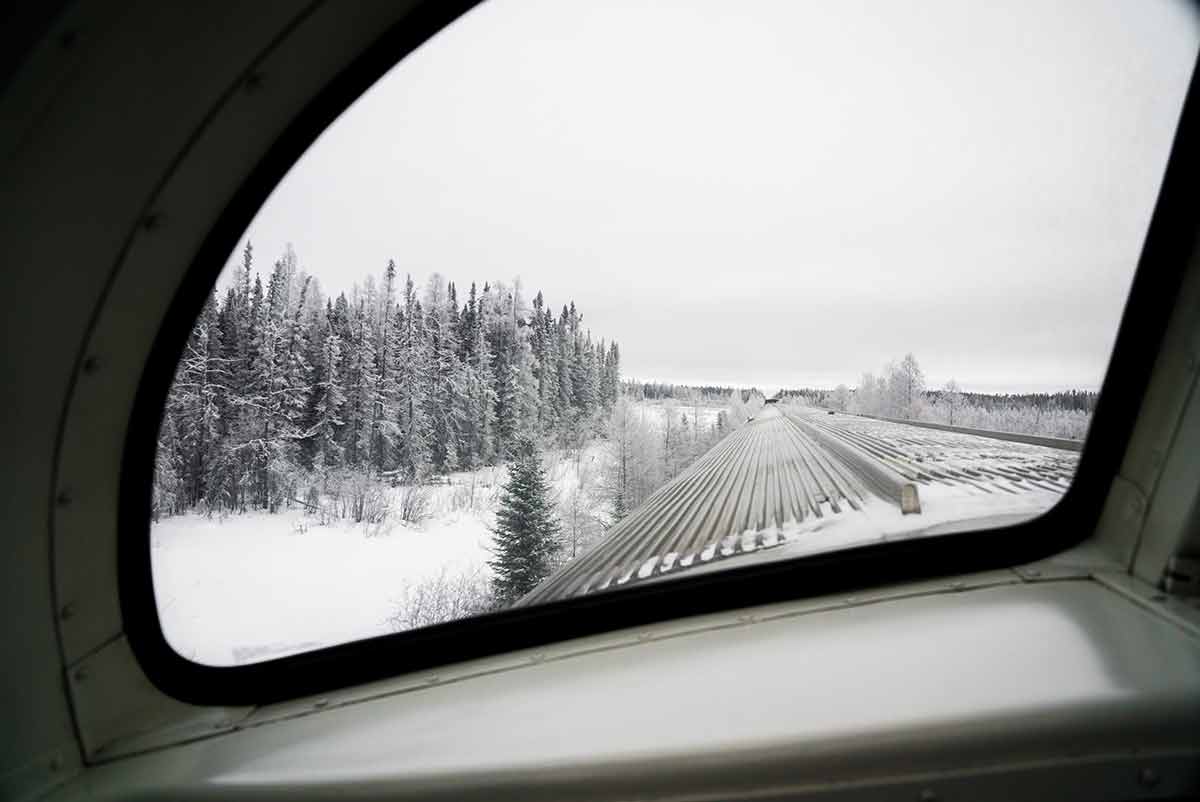
Winter is a great time to visit Canada for lower hotel rates, smaller crowds and cheaper flights.
Travelling in winter could save hundreds of dollars if you plan carefully as travel deals abound.
Winter is a good time for independent travellers seeking a bargain to book flights, hotels, motels, vacation rentals, bed and breakfasts, condos and apartments through booking sites like Bookings.com and TripAdvisor.
11- Culture Vultures
Wintertime brings museums to life. In cities large and small, galleries open their doors to showcase local artisans’ work while cultural institutions offer performances capturing the soul of local communities.
One of the best places to visit museums is in Ottawa, which has a collection of museums covering a range of subjects, such as the Canadian Museum of Nature, Canadian Aviation and Space Museum, Canadian Museum of History.
The most famous landmark in Winnipeg is the Canadian Museum of Human Rights, which is housed in an uber-contemporary building famous for its architecture as its contents.
12- Explore Charming Old Towns

Explore old-world charm while wandering along cobbled streets past historic buildings in the oldest walled city in North America, UNESCO World Heritage Quebec City.
Montreal is another city with narrow alleyways, an old port and oodles of French charm.
Niagara-on-the-Lake in Ontario is another delightful town with a well-preserved Victorian main street lined with flower beds, boutique shops and lovely historic architecture.
In Atlantic Canada, Lunenburg is a beautiful British colonial settlement established in 1753, with well-preserved timber houses painted in jellybean colours.
Also read:
13- The Wildlife Is Amazing
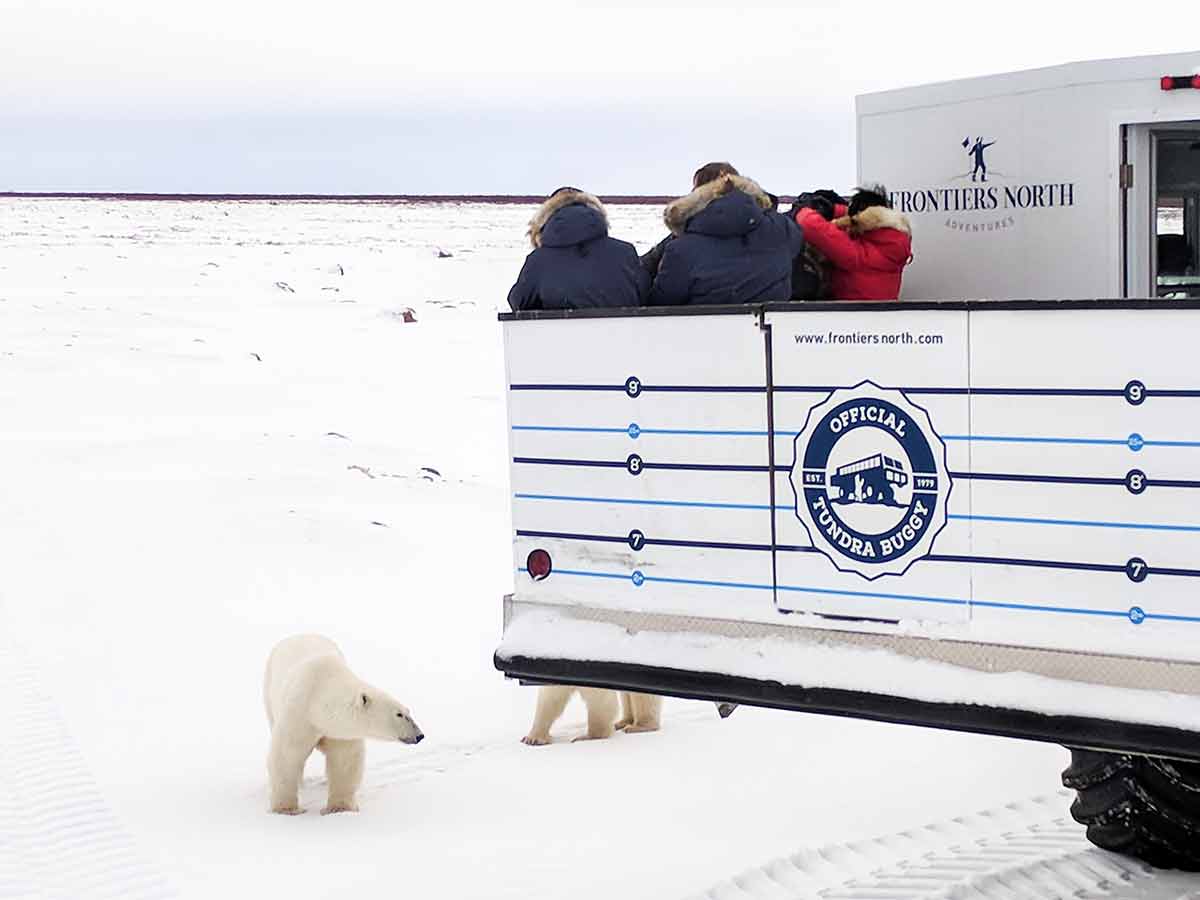
Wildlife enthusiasts will enjoy spotting animals in their natural habitats.
Look for elk, deer, moose and bighorn sheep that stand out against the snow in the national parks of Alberta and keep your eyes peeled for a lynx while gliding down the ski slopes.
Polar bears hang around Hudson Bay in Manitoba until November to feed on seals.
Wood bison, arctic fox, mountain goats and caribou roam the northern provinces of the Yukon and Northwest Territories.
Also read:
14- Winter Festivals
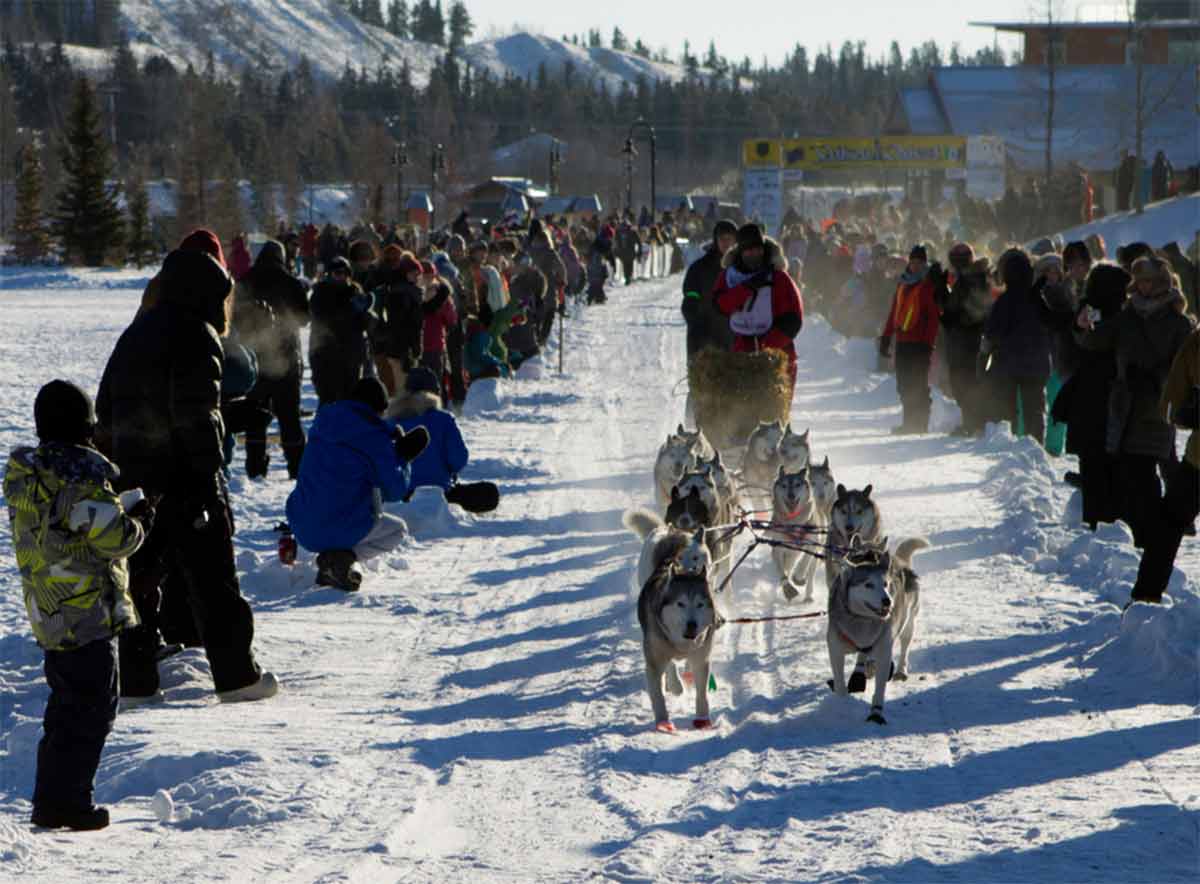
Quebec City might be a little chilly in January and February but it’s perfect weather for snow sculptures, snow baths, night parades and parties during one of the world’s largest winter festivals – the Quebec Winter Carnival.
Yukoners don’t hibernate, even if the winter is long, the Sourdough Rendezvous, a time to socialise, have fun and enjoy that winter weather. By day it’s a family-friendly festival, featuring feats of strength from carrying loaded flour sacks to solo dog-sledding and snow-caving.
Canada’s capital hosts Winterlude, a huge winter festival with outdoor dance parties and an international ice sculpture contest.
Niagara Falls lights up during the Winter Festival of Lights, with lighting displays creating a fabulous winter wonderland. A rainbow of spotlights creates a spectacular effect on the waterfall while concerts, performances and fireworks add to the festivities.
Also read:
15- Craft Breweries
Winter is a great time to keep warm in a pub and sample delicious microbrewed beers produced in Canada.
From porters to pale ales, lagers to stouts, pop into a craft brewery to taste local beer.
European settlers brought the tradition of brewing beer to Canada in the 17th century, but in recent times, craft beer brewing in Canada has flourished.
Vancouver Island has a growing craft brewery scene and Victoria, the capital of British Columbia, was one of the first places in Canada to adopt craft beers. But you’ll find craft breweries right across Canada from British Columbia to Nova Scotia.
Toronto, Calgary, Montreal, Vancouver, and Winnipeg are other cities to go on a craft beer pub crawl.
Winter FAQs
When Is Winter In Canada?
The Canadian winter goes from mid-December to mid-March each year, and as it’s a vast country so temperatures vary between the provinces.
What is the average temperature in Canada during winter?
The average temperature in Canada varies depending on where you are and generally range between -5 and -15 degrees Celsius (23 to 34 degrees Fahrenheit). Vancouver is not as cold as you might expect, with an average temperature of around 6 degrees Celcius (43 degrees Fahrenheit) in winter. Winter is harsher in the Prairie provinces and the country’s interior, where the daily average temperature of around −15 degrees Celsius.
What is a typical winter day like in Canada?
Don’t be put off by the sub-zero temperatures, as it’s not difficult to stay warm if you dress in layers, winter boots, gloves and beanies.
What is the coldest place in Canada?
Eureka in Nunavut is the coldest place in Canada based on the average yearly temperature, which averages out at −19.7 degrees Celsius (−3 degrees Fahrenheit).
Travel tips: Airfares are lowest in February and March but hotel rooms can be in demand in the ski resorts up to February. Prices skyrocket during the Christmas week (26 December to 1 January).
The Canadian border will open to fully vaccinated travellers against COVID-19 (with exceptions) on September 7, 2021.
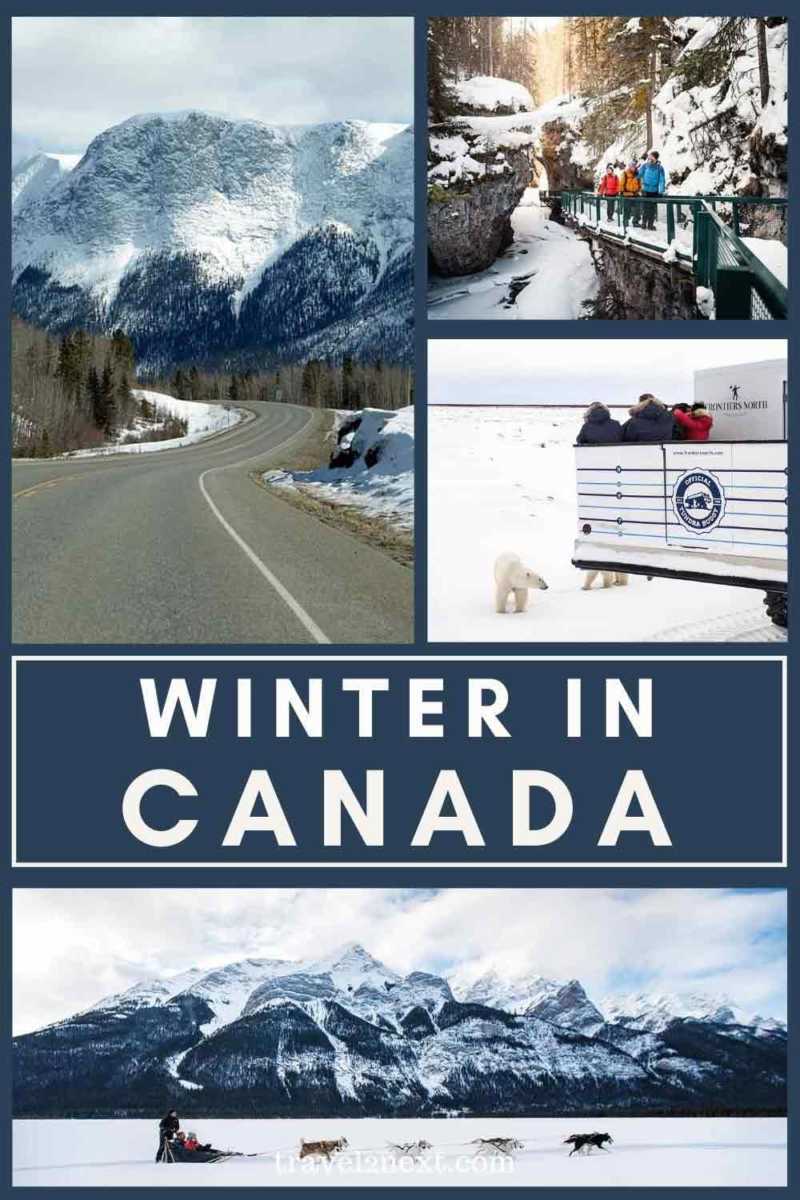
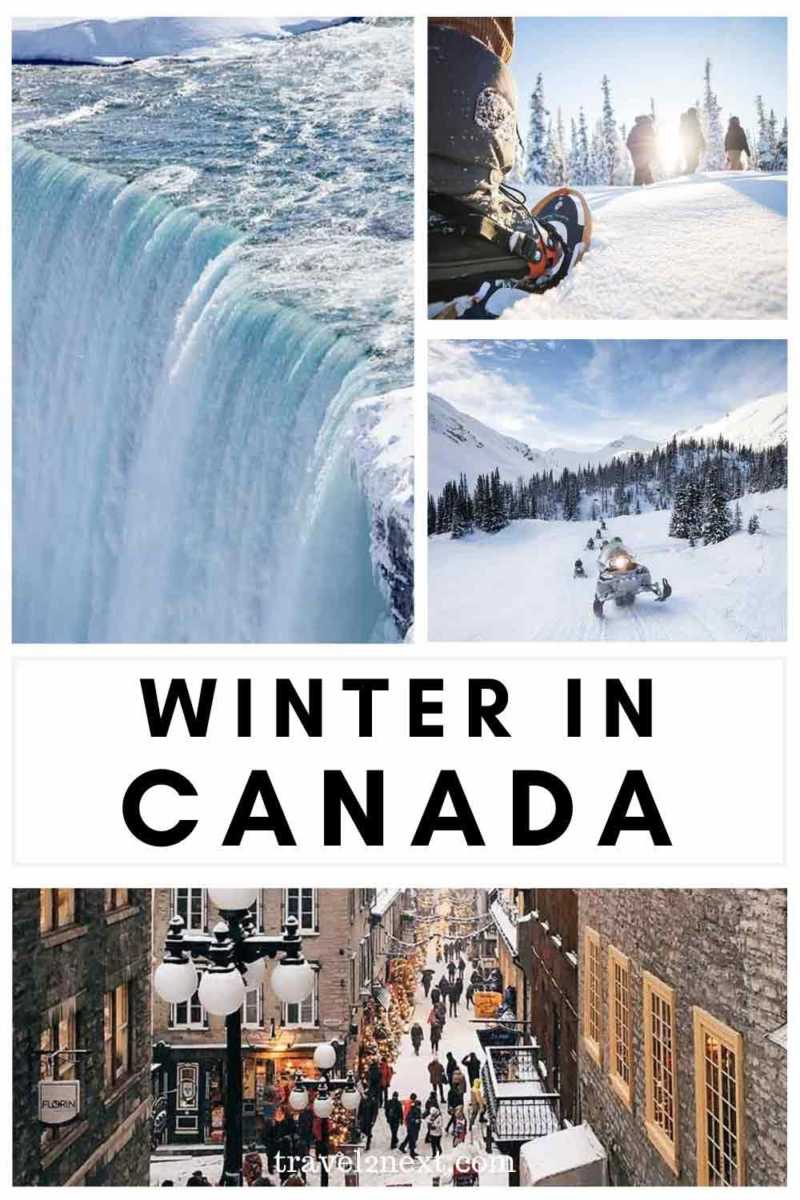
Plan Your Trip

Rent A Car – Find the best car rental rates at Discover Cars. They compare car hire companies to provide you with the best deal right now.

Find A Hotel – If you’re curious about this article and are looking for somewhere to stay, take a look at these amazing hotels.





